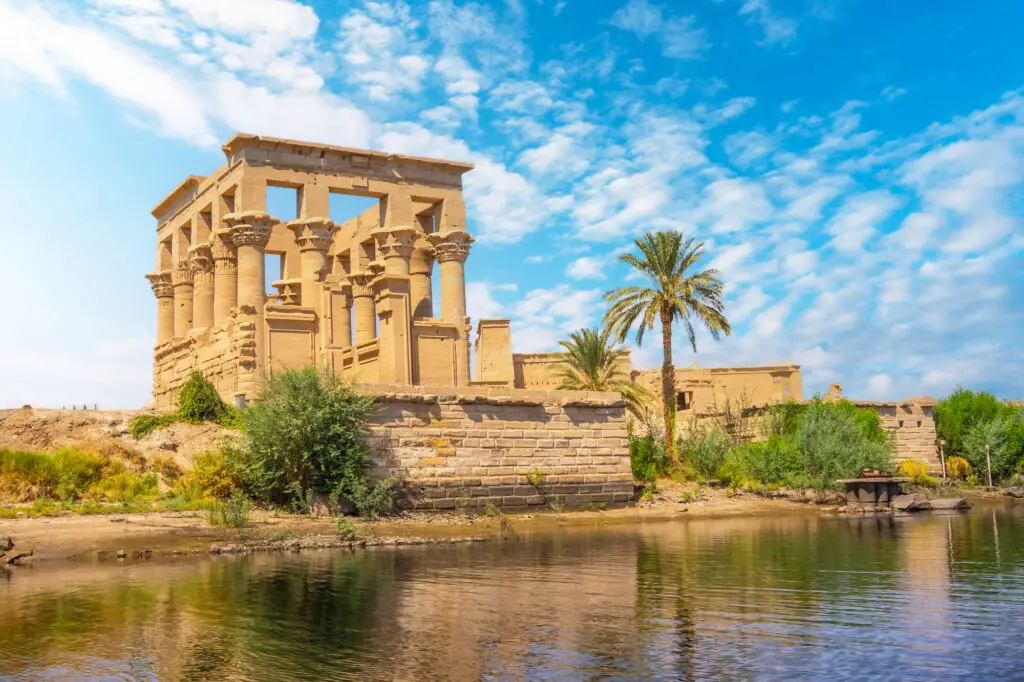The Nile River, a magnificent stretch of water that spans 4,135 miles and two continents, has been a lifeline and source of wealth for civilizations for thousands of years. Not only has it provided the indispensable resource of water to sustain life and agriculture, but it also has a legendary reputation for its treasure troves of gold. The ancient Egyptians, Nubians, and various other civilizations that thrived along its banks regarded the river as a bountiful source of the alluring yellow metal, sparking an obsession that has endured through the ages.
Indeed, from the first Pharaohs who adorned their opulent tombs with gold to the Romans who marveled at its abundance, the history of gold extraction from the Nile River is as rich and intriguing as the gold itself. It not only symbolized the divine and eternal in ancient religious practices, but it also served as a medium of exchange and a mark of wealth, power, and prestige. With the passage of time, these glittering fragments of history have given rise to captivating tales and speculations about the Nile’s hidden treasures.
But as we stride forward in the 21st century, an intriguing question has emerged: Does the Nile River still hold any gold? As the world grapples with depleting natural resources, the possibility of untapped wealth beneath the Nile’s currents is both tantalizing and contentious.
In this blog post, we are about to embark on a fascinating journey back in time to revisit the history of gold in the Nile River. Simultaneously, we will assess the current state of affairs, examining modern geological and archaeological evidence, and consider the economic, environmental, and sociopolitical implications of continuing the search for the Nile’s golden secrets.
Join us as we delve deeper into the legendary tales of the golden Nile and attempt to unravel whether its golden bounty continues to exist or if it’s a treasure consigned to the annals of history.

What Is The History Of Gold Along The Nile River?
The intertwining history of gold and the Nile River is as ancient and rich as the civilizations that have sprung up along its banks. Here’s a brief look at the history of gold and the Nile River:
Ancient Egypt And Nubia
The Nile River was the cradle of the ancient Egyptian civilization, and gold played a significant role in its culture and economy. The ancient Egyptians were likely the first to extract gold from the river around 3,000 BCE, long before the Pyramids’ construction. They were particularly skilled at panning gold from the river’s silt and mining it from the surrounding desert.
Gold had a powerful symbolic significance for the Egyptians, representing the flesh of their gods and symbolizing eternity, which explains why they used it extensively in their funerary art and other rituals. The Pharaoh Tutankhamun’s tomb, discovered in 1922, is a famous example of the opulence associated with gold in ancient Egypt.
Nubia, an ancient region located in what is today Sudan, was another significant source of gold along the Nile. Known as the ‘Land of Gold’ to the Egyptians, Nubia supplied Egypt with much of its gold during the Middle and New Kingdom periods.
The Romans And Byzantines
The significance of Nile gold didn’t end with the decline of Ancient Egypt. With the arrival of the Romans, the thirst for Nile’s gold grew. The Romans even established a ‘Golden Fleet’ to transport gold from Nubia to Rome.
Under the Byzantine Empire, gold continued to be mined in Nubia, and its availability was crucial for the empire’s economic stability. The city of Alexandria, situated at the Nile delta, was a vibrant center for gold coin minting.
Medieval And Modern Periods
In the medieval period, gold mining along the Nile continued but at a lesser intensity due to political instabilities and shifting trade dynamics.
Modern scientific explorations, such as geological surveys, have confirmed that gold still exists in the region, particularly in the Eastern Desert and Sudan. These explorations have led to a resurgence in gold mining activity, especially since the late 20th and early 21st centuries.
The story of gold and the Nile is a captivating testament to the natural wealth of the Nile River region and its impact on the history and culture of the civilizations that lived along its banks. The river’s golden allure remains a vibrant thread in the rich tapestry of Nile history, its influence echoing through the millennia.
What Is The Ancient Gold Camp Found On The Nile River?
The discovery of an ancient gold-processing camp along the Nile River, a site that archaeologists believe is the first physical evidence of where Egypt obtained its significant gold reserves.
Located approximately 800 miles south of Cairo, in the region known as Nubia (modern-day northern Sudan), the camp was likely operational between 2000 B.C. and 1500 B.C. Archaeologists hypothesize that the Kushites, non-Egyptians who ruled this region, gathered and processed gold at this site and used it for trade with Egypt.
The discovery challenges previous perceptions of the Kingdom of Kush, suggesting it was larger and more influential than previously thought. This conclusion is based on the assumption that processing gold at such a distance (over 200 miles) from their capital city, Kerma, would require considerable logistics and discipline.
To the casual observer, the site might appear as a simple field of rocks near the Nile’s banks. However, closer examination revealed 55 two-foot grindstones used to crush gold ore. The resulting dust and gold flakes were probably washed and separated in the Nile’s waters.
Archaeologist Geoff Emberling from the University of Chicago’s Oriental Institute speculates that the gold processed at this site was likely sent to the powerful leaders in Kerma, in exchange for trinkets and supplies, reflecting a sort of economic system based on status and influence.
Interestingly, the Kushite rulers may have used this gold as a bargaining chip against the Egyptians, who eventually seized control of the weakened Nubian Kingdom around 1500 B.C. Despite their trading relationships, cultural clashes and competition for resources resulted in tension between the Egyptians and Kushites.
The researchers note that there’s still much to uncover about the site and its historical implications. However, ongoing construction of a dam upstream poses a significant threat to archaeological exploration in the area. An estimated 2,500 sites risk being submerged and destroyed, representing a potential massive loss of history.
This discovery not only offers insights into ancient gold extraction and trade but also emphasizes the need for timely archaeological interventions in preserving our shared human heritage.
Is There Any Evidence Of Gold In The Nile River Today?
There is evidence of gold still being found in and around the Nile River. Gold deposits exist in several regions near the Nile, particularly in the Eastern Desert and Sudan.
In Sudan, for instance, the country’s gold production has been on the rise since the 2000s, with the government encouraging artisanal mining and opening up sites for exploration. The gold mining industry has become an important part of Sudan’s economy. The gold found here is often alluvial gold, which is gold deposited by the movement of water—in this case, by the Nile over thousands of years.
However, it’s important to understand that while gold is still being found, the levels of gold extraction are not on the same scale as they were in ancient times. Also, the methods used to extract gold in modern times, often industrial in nature, can have significant environmental impacts.
It’s also worth noting that continued mining in these areas depends on various factors, including the geopolitical situation, the international gold market, the feasibility of extraction, and environmental considerations. Therefore, while there is evidence of gold still in and around the Nile, its continued extraction is not guaranteed and is subject to many external factors.
As always, for the most up-to-date and accurate information, I would recommend checking recent geological surveys or studies, news reports, and official government statistics.

